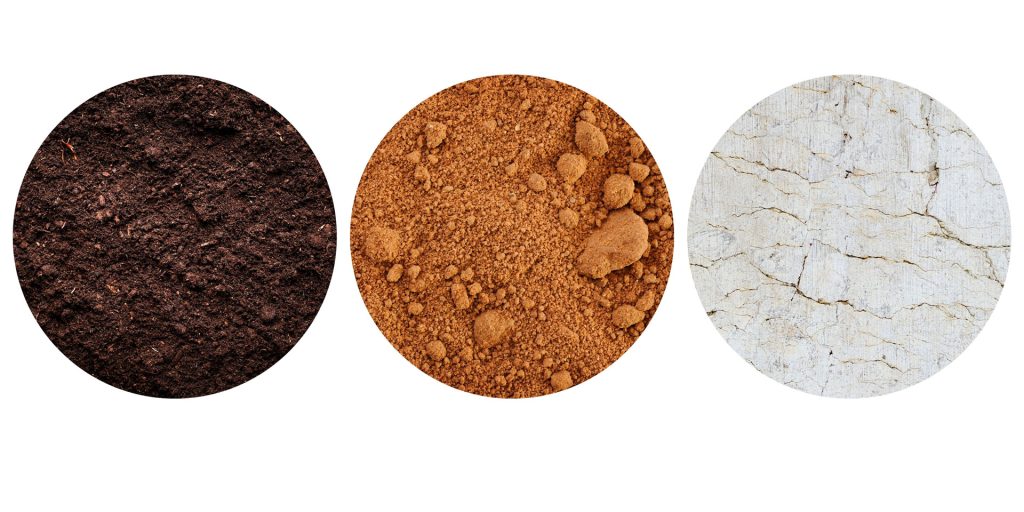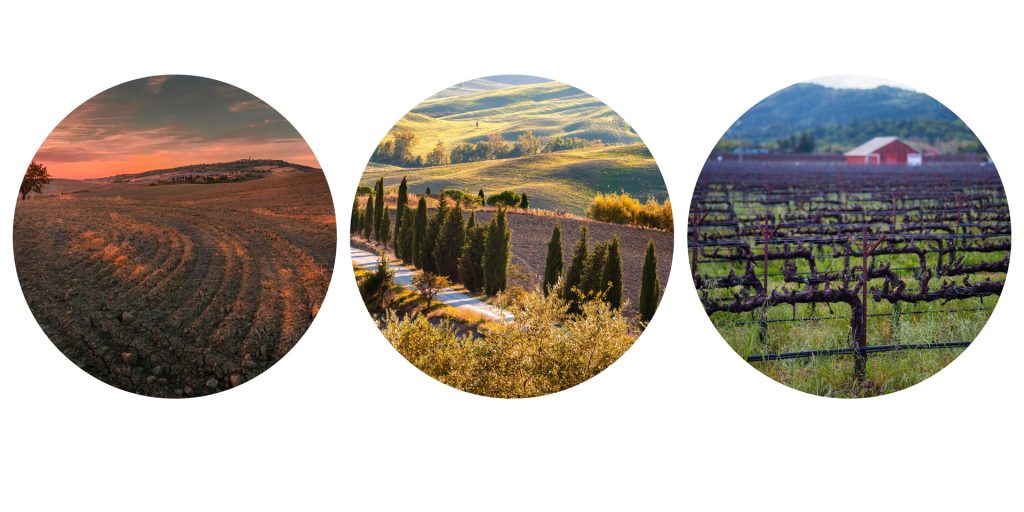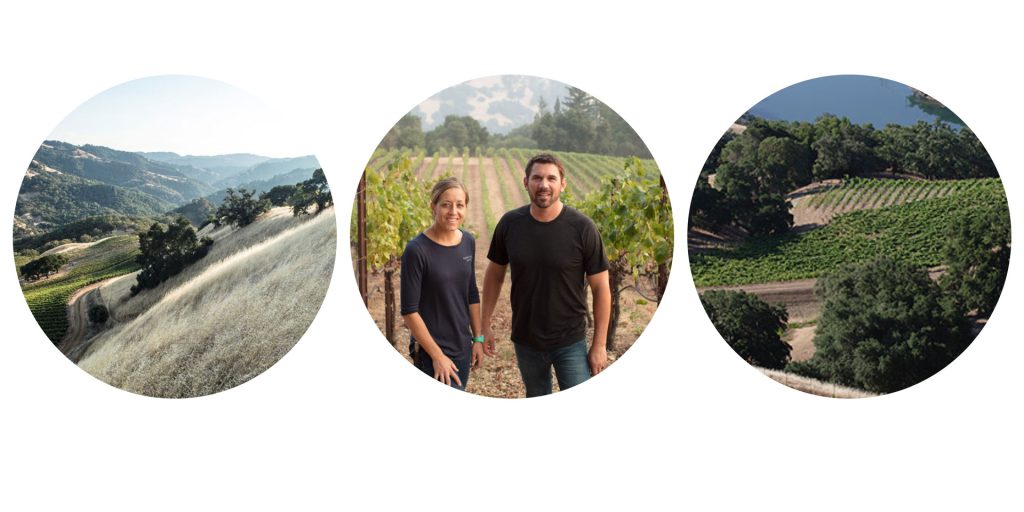Let's Talk About Soil...
With the arrival of Spring and a return to our gardens, it’s a great time to talk about dirt! Or, to put it more elegantly, soil. First and foremost, wine is a product of its environment. The French call this ‘terroir’ and it refers to a ‘sense of place’ – the regional characteristics that contribute to how the wine looks, smells, tastes and feels. Soil is one such characteristic, perhaps the most confounding one of all, with debate over its impact in the glass. While winemakers agree that climate and grape variety play a greater role, there is universal agreement that soil matters!
So, what differentiates one soil to the next? Drainage, water and heat retention, fertility, depth and soil type and composition are some of the criteria that determine suitability for wine growing. A soil’s density greatly impacts its ability to drain or hold water, which is critical to vine health and can either be a benefit or detriment depending on the climate where the vineyard is located. The best and healthiest vines get just enough water to survive. The degree to which soil retains heat greatly affects the ripening process and in turn, the style of the wine produced. Similarly, the fertility of a soil determines vine growth and, in turn, grape yield. Vines planted in overly fertile soil can produce diluted, simple wines that lack depth, weight and character. And it is said that the best wines are made from vines that are forced to dig deep down into the bedrock below for water and nutrients. These factors, plus the different compositions and types of soil found in vineyards throughout the world, play a critical role in the development of grapes vines and the final wine in glass.

It is important to distinguish soil composition – which refers to the size of the pieces found in the ground and that determines how porous a soil is – from soil type, or the material of which it is made.
There are four primary soil compositions, though most vineyards are a combination of two or more. The most porous is gravel, which has great drainage and poor water retention. It is relatively infertile and roots are forced deep into the subsoil to find nutrients and water. It also retains heat well, allowing grapes to ripen fully, particularly in marginal climates. Generally speaking, gravel soils produce big, high-alcohol wines such as in Bordeaux’s left bank, Piedmont and the Rhone Valley.
There are four primary soil compositions, though most vineyards are a combination of two or more. The most porous is gravel, which has great drainage and poor water retention. It is relatively infertile and roots are forced deep into the subsoil to find nutrients and water. It also retains heat well, allowing grapes to ripen fully, particularly in marginal climates. Generally speaking, gravel soils produce big, high-alcohol wines such as in Bordeaux’s left bank, Piedmont and the Rhone Valley.
Slightly smaller and less porous is sand, which also has good drainage and poor water retention but is slightly more fertile than gravel. It has great heat retention and is ideal for wetter wine regions. Sand-based wines are typically light in colour and exhibit elegance and delicacy, with great aromatics and lower levels of tannin. You’ll find sand-based vineyards in parts of Bordeaux, South Africa and Portugal.
Silt is finer than sand and much less porous. It has poor drainage and retains water well. As it also retains heat reasonably well, it is best suited for warm, dry climates. It is fairly fertile so it is important that yields are restricted in order to maintain wine intensity and depth. Silt typically produces concentrated, round wines with moderate levels of tannin and acidity. You’ll find great examples in Washington, Austria and parts of California’s Sonoma County.
Clay is the least porous and most dense of the four. It retains water well but has difficulty maintaining heat and thus is well-suited to hot, dry regions. It is also the most fertile and stores nutrients well, making vineyard management critical if quality wine production is the priority. Clay-based soils make dense, flavourful wines with lots of colour and personality as you’ll find in the warmer parts of Tuscany, Australia and the Napa Valley.

Flashing back to first-year geology class, there are 3 main soil types: Sedimentary (deposited by water); Metamorphic (formed by pressure); and Igneous (formed by cooling lava below the earth’s surface). Any one of these can be found in vineyards throughout the world. Each has a unique effect on wine style.
The most famous type of sedimentary rock in the wine world is limestone, called calcaire in France’s famed Burgundy and Champagne regions. However sedimentary-based soils can be found in all corners of the wine world from Alsace to Chianti, South Africa to Prince Edward County. They tend to produce particularly age-worthy wines with lots of bright acidity.
Metamorphic-based soils include slate, schist and gneiss. Slate soils are ideally suited to cool regions like Germany’s Mosel Valley. Schist provides the framework for dense, powerful wines, often with streaks of minerality lingering beneath. Gneiss is a very hard, infertile soil that is rich in minerals and produces wines with appealing acidity. You’ll find examples of metamorphic soil in the Loire Valley of France, as well as in the Roussillon region and neighbouring northeast Spain.
Igneous rocks were formed by cooling lava beneath the earth’s surface. Volcanic-based soils, like those found throughout Sicily and parts of Greece, are making some of the world’s most interesting and trendy wines, with some people finding intriguing notes of savoury ash in the glass. They are often found in areas surrounding dormant or active volcanoes. Granite, another Igneous soil, produces wines with high acidity framed by subtle notes of salty minerality. These are notably found throughout France’s Beaujolais region.
Mauritson Wines
7th generation farmers, the Mauritson family have been working their vineyards since 1868, finally releasing their own wines in 1998. The winery is now under the stewardship of former University of Oregon football player, Clay Mauritson, who grew up working the vineyards with his father before cutting his teeth at Kenwood Vineyards. Cabernet Sauvignon and Zinfandel specialists, the vast majority of Mauritson grapes are sold to premium producers throughout Sonoma County. Their limited-release estate offerings are widely considered amongst the finest in California.
The vision behind their Single Soil Wines is simple: produce the greatest Cabernet Sauvignon in Sonoma County by cultivating exemplary vineyards defined by their soil. These wines are 100% Cabernet Sauvignon made from identical clone and rootstock. The sole difference is the soil in which the grapes were grown. We are extremely pleased to offer the 2016 Positas Cabernet Sauvignon and 2016 Clough Cabernet Sauvignon through the LCBO’s Cellar Collection (formerly CLASSICS). This is a tremendous opportunity to experience the impact of soil on the wine in your glass.

2016 Clough Cabernet Sauvignon
Clough soil is gravely loam (a blend of sand, silt and clay), layered with quartz and chert (a very hard and resistant microcrystalline variety of quart). The gentle slope of these soils on the Mauritson property, at elevations of 200 – 1000 feet, provides the perfect balance of minimal water retention without stressing the vines too much. They are fairly nutrient-rich and the location provides ample sun exposure and drainage. Clough soils embody the prototypical Cabernet landscape, yielding small-berried clusters with intense red fruit and nuances of earth and spices. This is hand-crafted California Cabernet at its finest, aging 22 months in 100% French oak barrels prior to an extended time in bottle prior to release.
A seductive nose of flaked milk chocolate, vanilla, toasted walnut, crushed rock, and black and blue fruits. The palate is dense and fleshy, with layered notes of sweet blue fruit, violet, spice and mocha. This is beautiful and energetic Cabernet with plenty of structure and depth to age gracefully for 10+ years. Only 48 cases produced.
2016 Positas Cabernet Sauvignon
Tumbled through the ages by creeks and rivers, Positas is a gravelly loam soil formed in alluvial material. Primarily located between 200-1,000 feet in elevation, Positas soils are found on stream terraces and side slopes, commonly referred to as benchland, home to some of the greatest Cabernet Sauvignon. Positas soils are nutrient-rich and moderately deep, yet well-drained. Cabernet thrives in this environment, yielding fruit with thick skins, broad tannins and rich characteristics.
This is a refined, yet powerful Cabernet with detailed aromas of red fruits, crushed river rock, fennel blossom and spicy dried sage. The palate is big and broad, with ripe, chewy tannins and streaks of classic Mauritson minerality. Despite its age, this still has a youthful freshness that portends lengthy life ahead. Decant if enjoying now or age 10-15 years. Only 49 cases produced.

